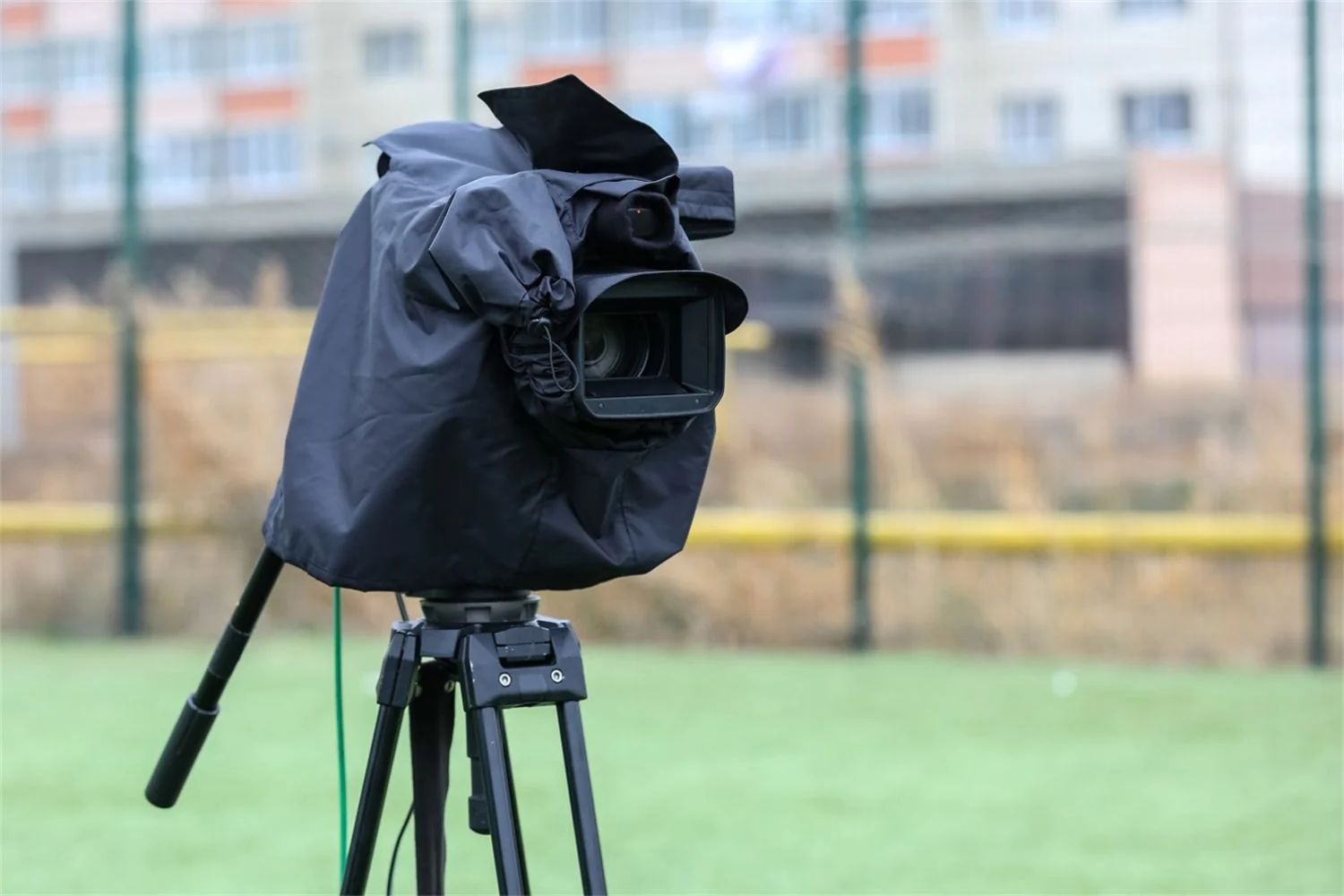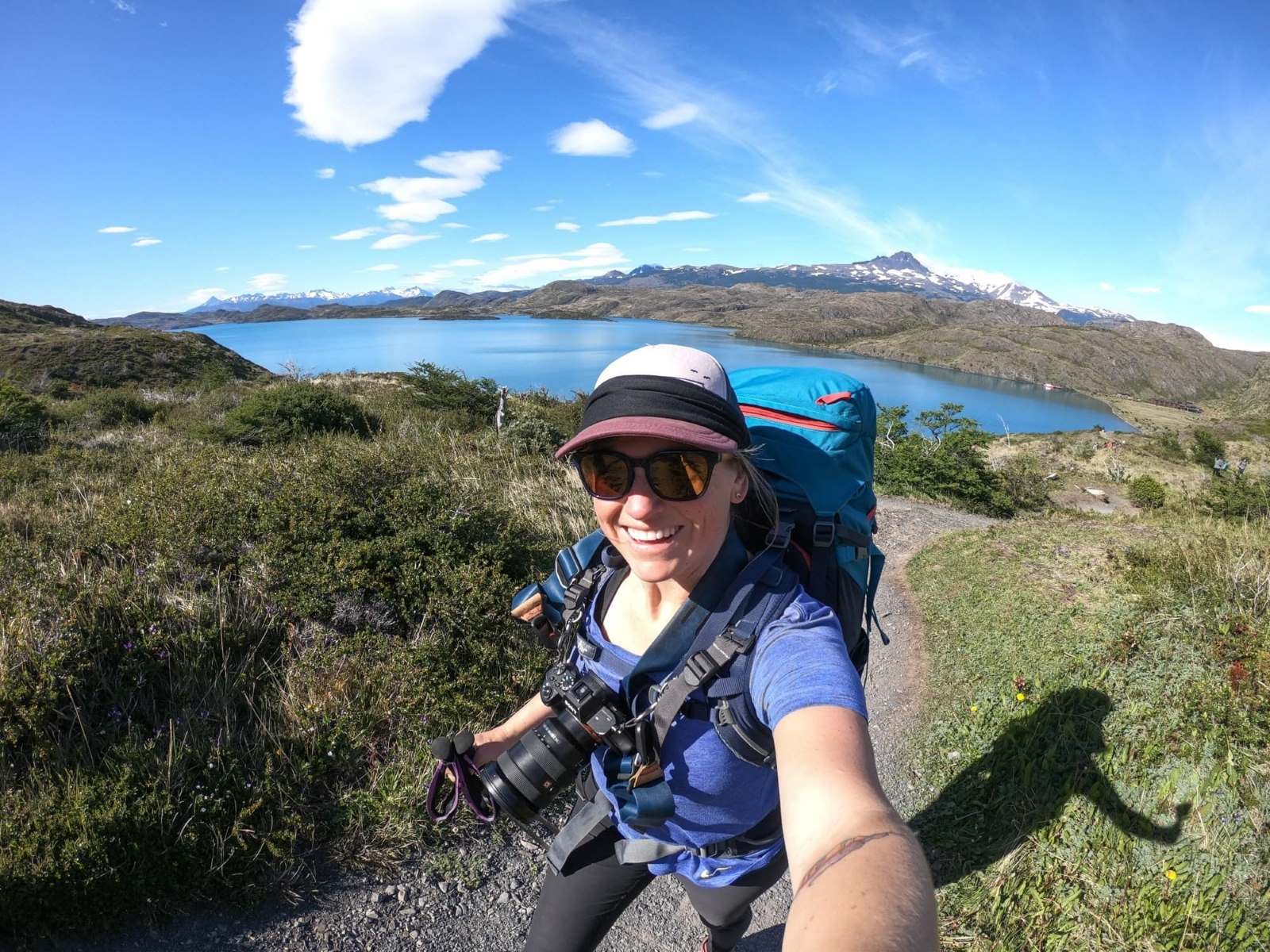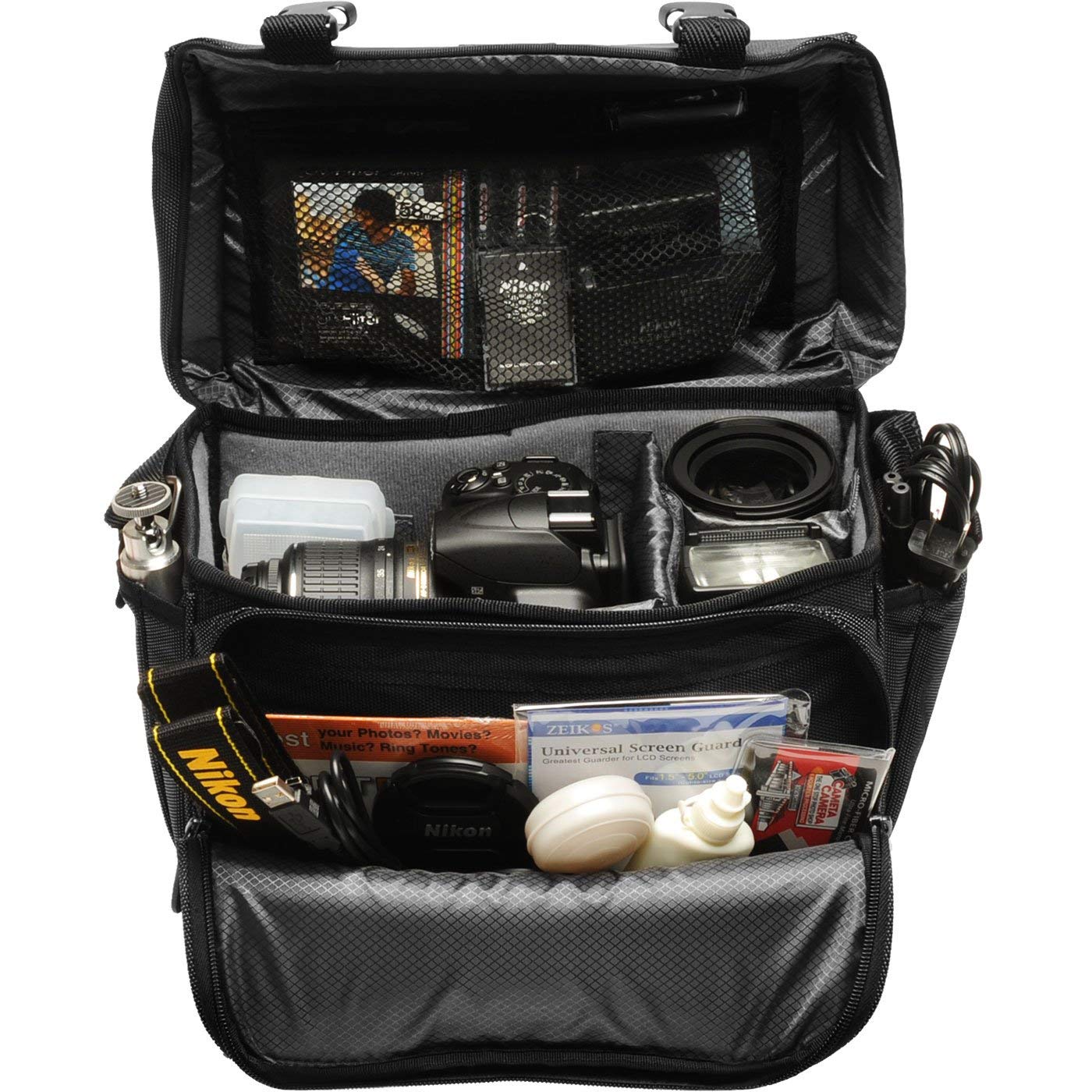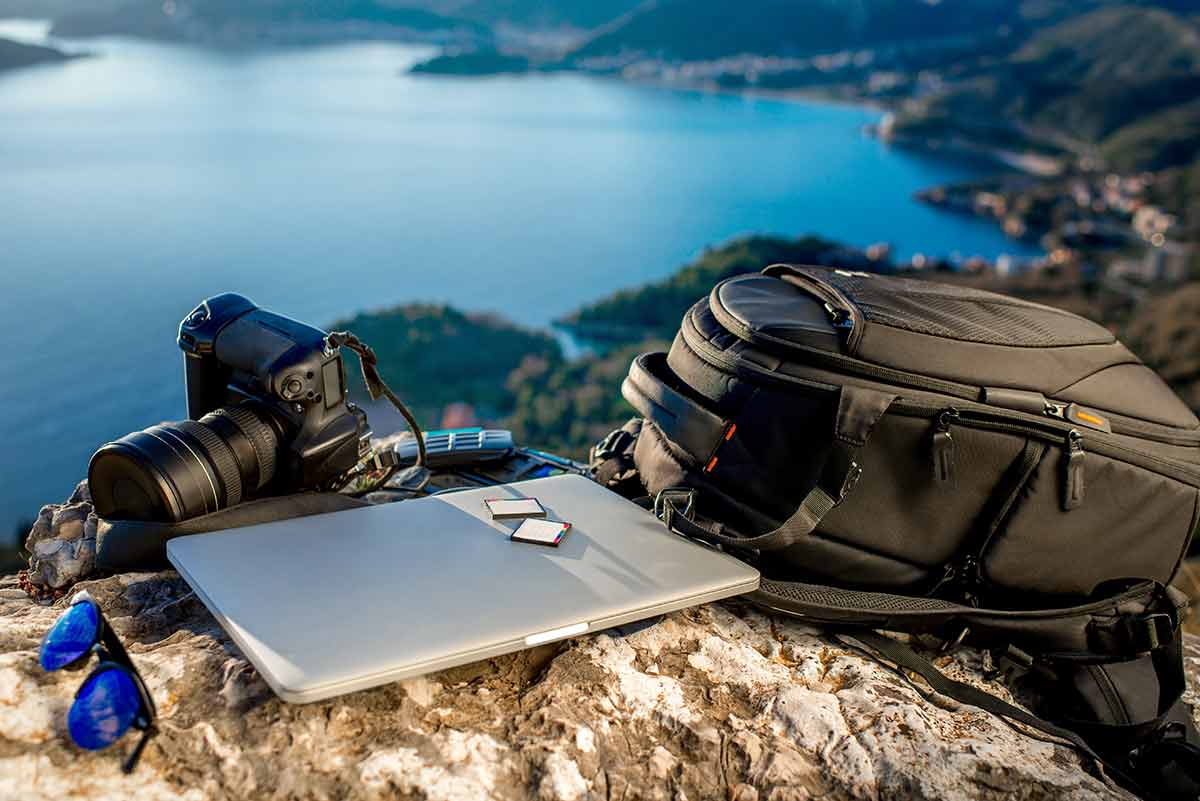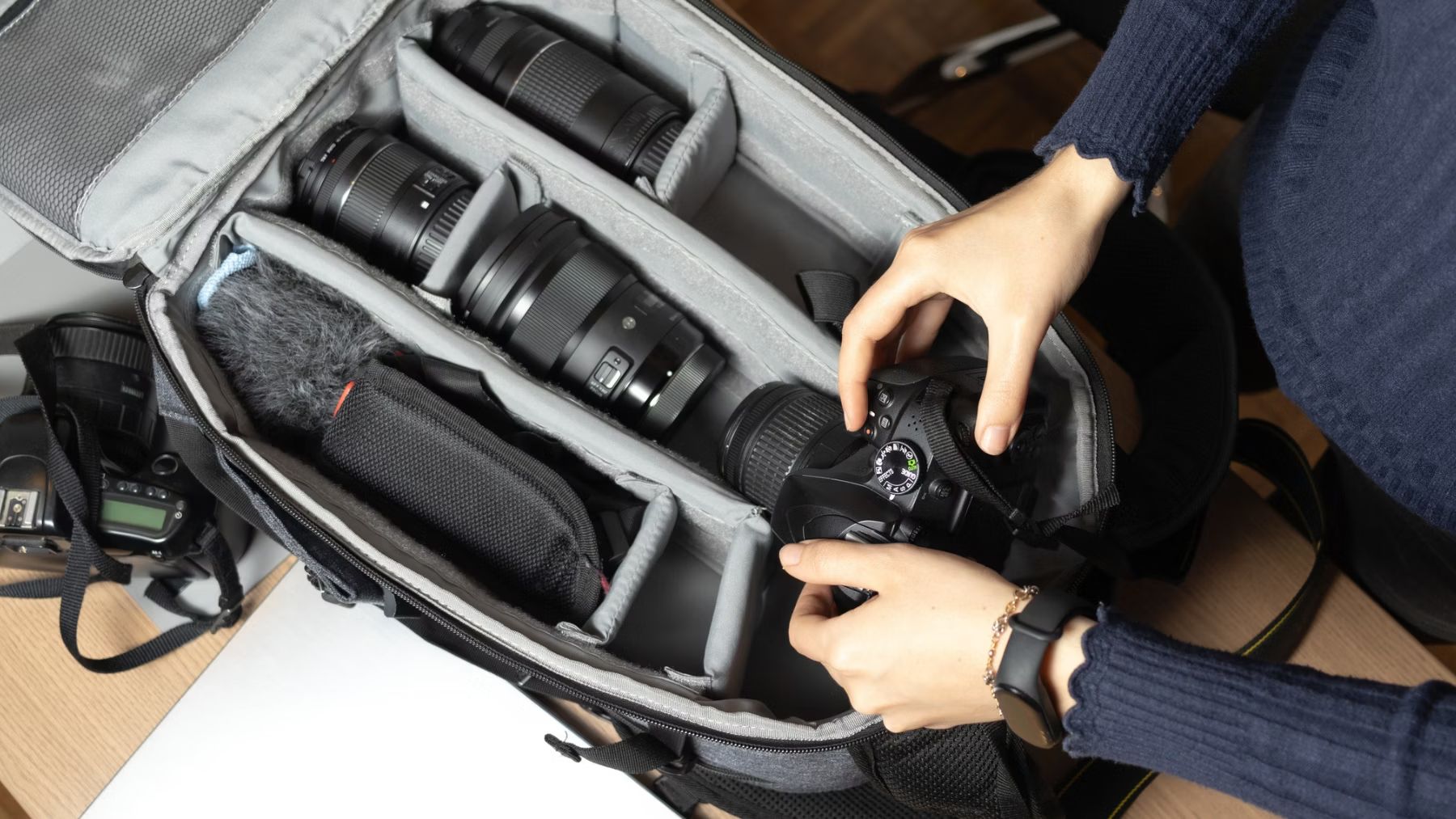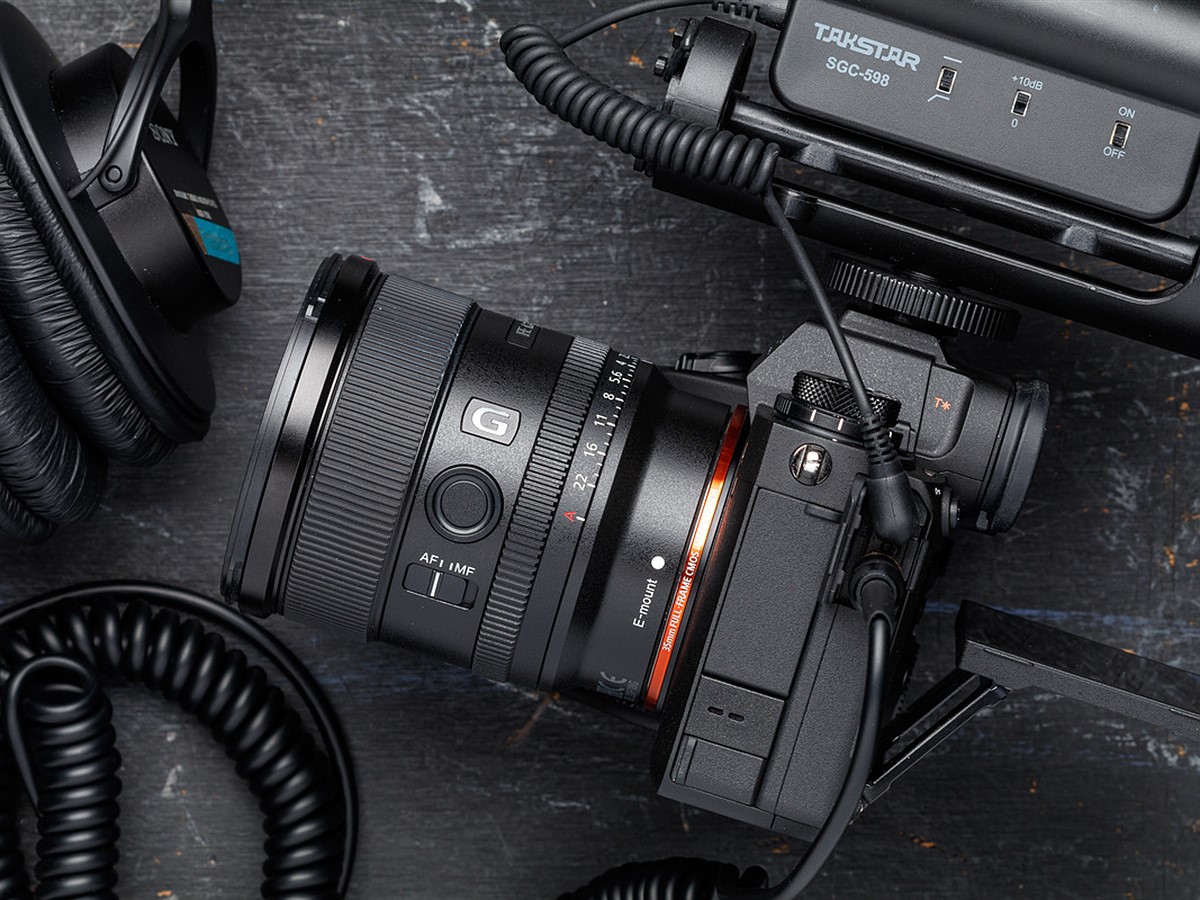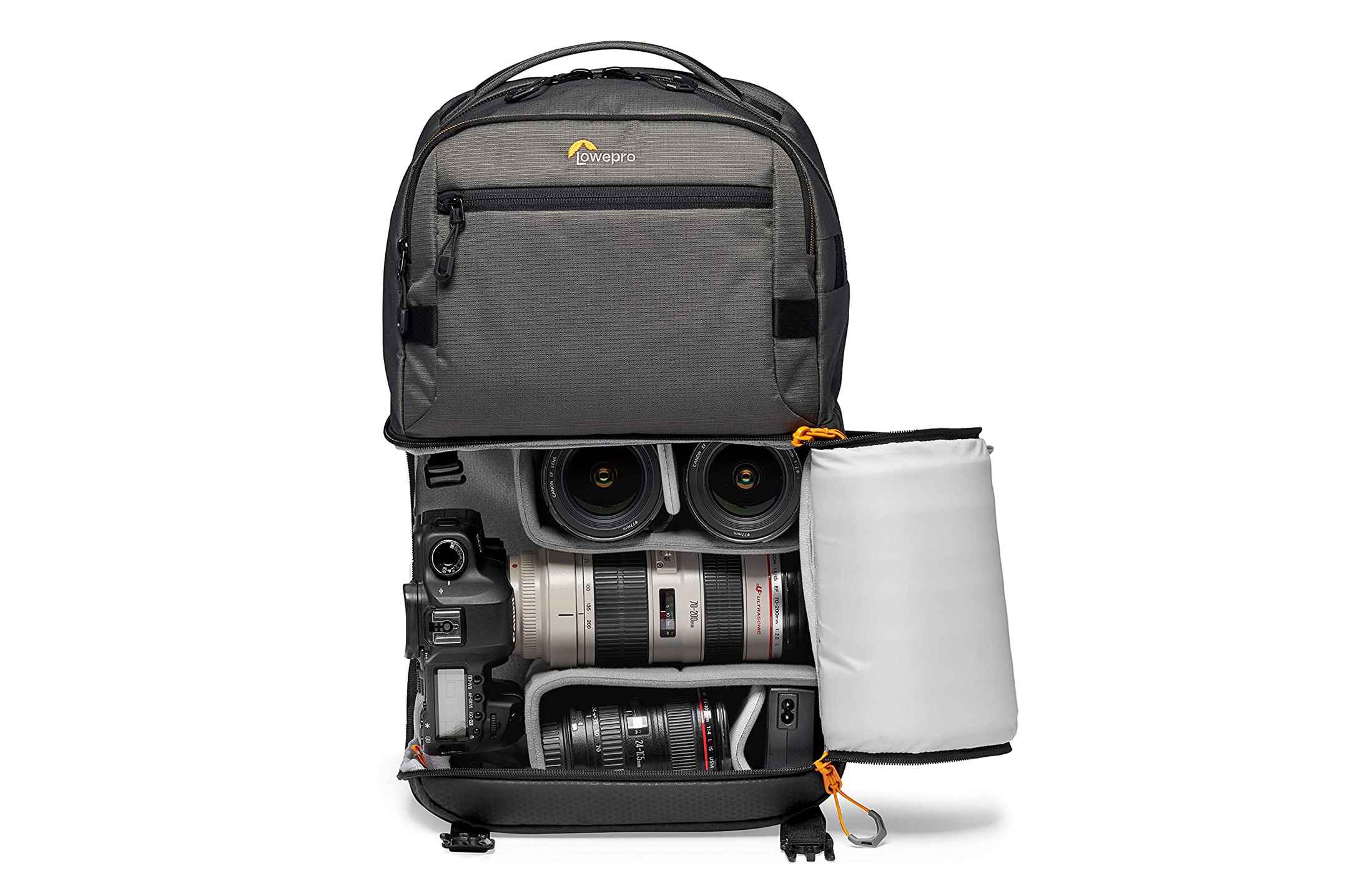Choosing the Right Camera Bag
When it comes to safeguarding your DSLR camera from the unpredictable elements, choosing the right camera bag is paramount. A well-designed bag not only provides protection from rain but also offers convenience and accessibility for photographers on the move.
-
Water-Resistant Material: Opt for a camera bag crafted from water-resistant materials such as nylon or polyester. These materials provide an initial layer of defense against moisture, safeguarding your valuable equipment from unexpected downpours.
-
Sealed Zippers and Compartments: Ensure that the camera bag features sealed zippers and compartments. This design prevents water from seeping into the bag, keeping your camera and accessories dry and secure.
-
Padded Interior: Look for a bag with a padded interior to shield your camera from impact and moisture. The padding acts as a barrier, absorbing any external shocks and providing an extra layer of protection.
-
Adjustable Dividers: A bag with adjustable dividers allows you to customize the interior layout according to your specific gear requirements. This not only ensures a snug fit for your camera but also minimizes the risk of moisture penetration.
-
Compact Design: Opt for a compact and ergonomic design that facilitates ease of movement. A well-fitted bag allows you to navigate through crowded or outdoor settings with agility, while also reducing the exposure of your gear to rain and moisture.
-
Additional Rain Cover: Some camera bags come with an integrated rain cover or offer the option to attach one externally. This feature provides an extra layer of protection during heavy rainfall, ensuring that your camera remains shielded from water damage.
Choosing the right camera bag is the first line of defense in protecting your DSLR camera from rain. By investing in a high-quality, water-resistant bag with thoughtful design features, you can safeguard your equipment while capturing stunning moments in any weather condition.
Using a Rain Cover or Sleeve
When venturing into the outdoors with your DSLR camera, utilizing a reliable rain cover or sleeve is an essential practice to shield your equipment from moisture and ensure uninterrupted photography sessions. These protective accessories serve as a crucial barrier against rain, safeguarding your camera and lenses from potential water damage.
Here are some key considerations for effectively using a rain cover or sleeve:
-
Compatibility and Fit: Ensure that the rain cover or sleeve is specifically designed for your camera model. A well-fitted cover provides comprehensive protection, leaving no vulnerable areas exposed to rain or moisture. It should accommodate the camera body and lens snugly, without hindering the operation of camera controls and functions.
-
Transparent Viewing Panels: Look for a rain cover with transparent viewing panels made of durable materials such as clear plastic. These panels enable you to monitor settings, view the LCD screen, and make adjustments without compromising protection. Clear visibility is essential for maintaining creative control and capturing exceptional shots even in challenging weather conditions.
-
Accessibility and Ergonomics: Opt for a rain cover that allows easy access to essential controls and features. It should facilitate smooth handling and adjustments, ensuring that you can continue shooting comfortably and efficiently while the cover is in place. Additionally, consider covers with integrated sleeves or openings for tripod mounting to maintain versatility in various shooting scenarios.
-
Durability and Portability: Prioritize rain covers or sleeves constructed from durable, tear-resistant materials that offer long-term reliability. Lightweight and packable designs are advantageous for photographers on the go, allowing for convenient storage and quick deployment when unexpected rain showers occur. A compact cover that can be easily stowed in your camera bag ensures preparedness for adverse weather conditions.
-
Secure Fastenings and Seals: Check for secure fastenings, adjustable closures, and sealed seams to prevent water ingress. A well-secured rain cover provides peace of mind during inclement weather, maintaining a dry and protected environment for your camera equipment. Velcro straps, elastic bands, and drawstring closures contribute to a secure and customizable fit.
By utilizing a purpose-built rain cover or sleeve, photographers can proactively safeguard their DSLR cameras from rain-induced damage while maintaining operational flexibility and creative freedom in outdoor photography pursuits.
Using an Umbrella or Rain Shield
When confronted with rainy weather during outdoor photography sessions, employing an umbrella or rain shield can serve as a practical and versatile solution to protect your DSLR camera and maintain optimal shooting conditions. These accessories not only shield your equipment from rain but also provide a portable shelter that enables uninterrupted photography in inclement weather.
Consider the following tips for effectively using an umbrella or rain shield to safeguard your DSLR camera:
-
Size and Coverage: Select an umbrella or rain shield that offers ample coverage for both you and your camera equipment. Opt for a size that provides sufficient protection without hindering your mobility or impeding your ability to compose shots. A larger canopy or shield ensures comprehensive coverage, minimizing the exposure of your gear to rain and moisture.
-
Sturdy and Lightweight Construction: Prioritize umbrellas or rain shields constructed from durable and lightweight materials. A sturdy yet lightweight design enhances portability and ease of use, allowing you to maneuver effectively while shielding your camera from rain. Seek materials that offer reliable water resistance to maintain a dry environment for your equipment.
-
Hands-Free Operation: Look for umbrellas with ergonomic handles or rain shields with adjustable mounting options. Hands-free operation enables you to hold and position the umbrella or shield while maintaining a firm grip on your camera. This feature promotes flexibility and convenience, facilitating unhindered photography even in challenging weather conditions.
-
Adjustable Angles and Stability: Choose an umbrella or rain shield that allows for adjustable angles and secure positioning. The ability to tilt and adjust the shield ensures optimal coverage and protection, especially when capturing shots from various angles or in changing wind conditions. Stability features such as reinforced ribs or locking mechanisms contribute to reliable performance in adverse weather.
-
Integrated Mounting Options: Explore umbrellas or rain shields with integrated mounting options for tripods or camera rigs. These features enable you to secure the umbrella or shield directly to your equipment, providing hands-free protection and allowing you to focus on composing and capturing images without compromising on weather protection.
By utilizing an umbrella or rain shield, photographers can effectively shield their DSLR cameras from rain while maintaining mobility and operational flexibility. These accessories not only protect equipment from moisture but also enable photographers to continue capturing remarkable images in diverse outdoor environments, regardless of the weather conditions.
Keeping a Microfiber Cloth Handy
When braving the elements with your DSLR camera, having a microfiber cloth readily available is a practical and essential measure to safeguard your equipment from rain and maintain pristine optical quality. This versatile and gentle cleaning tool serves as a valuable asset in managing moisture, condensation, and unexpected raindrops, ensuring that your lenses and camera body remain free from smudges, water spots, and debris.
Here are key considerations for keeping a microfiber cloth handy to protect your DSLR camera:
-
Gentle and Absorbent Material: Opt for a high-quality microfiber cloth designed specifically for cleaning camera lenses and delicate surfaces. The ultra-fine fibers of a microfiber cloth are adept at absorbing moisture, oils, and particles without leaving lint or scratches, preserving the optical integrity of your lenses and the exterior of your camera.
-
Quick Drying and Reusability: A microfiber cloth’s rapid absorption properties facilitate swift drying of moisture and raindrops from the camera body and lenses. Its reusable nature allows for multiple uses during a single photography session, making it an efficient and eco-friendly tool for managing moisture and maintaining clear, unobstructed optics.
-
Compact and Portable Design: Ensure that the microfiber cloth is compact and easily portable, making it convenient to carry in your camera bag or pocket. Its accessibility enables prompt action in addressing rain-induced moisture or unexpected water droplets, allowing you to swiftly and effectively safeguard your equipment without interrupting your photography endeavors.
-
Non-Abrasive Cleaning: The soft and non-abrasive nature of microfiber ensures gentle and safe cleaning of lenses and camera surfaces. It effectively removes water droplets, smudges, and dust particles without causing scratches or abrasions, preserving the pristine condition of your equipment and optical components.
-
Complementary Lens Cleaning Solutions: Pairing the microfiber cloth with a specialized lens cleaning solution or spray enhances its effectiveness in managing rain-induced moisture and maintaining optical clarity. These solutions are formulated to safely and effectively remove stubborn water spots and contaminants, complementing the absorbent and gentle properties of the microfiber cloth.
By keeping a microfiber cloth readily accessible, photographers can proactively address rain-related moisture and maintain the optical integrity of their DSLR cameras. This simple yet indispensable tool enables swift and effective management of moisture and debris, ensuring that photographers can continue capturing stunning images with clear and pristine optics, even in challenging weather conditions.
Using a Lens Hood and Filter
When photographing in rainy conditions, employing a lens hood and filter is an effective strategy to protect your DSLR camera from rain and maintain the optical quality of your images. These accessories not only shield the lens from raindrops and moisture but also offer additional benefits such as glare reduction, lens protection, and improved image quality in challenging lighting conditions.
Here are essential considerations for using a lens hood and filter to safeguard your DSLR camera:
-
Rain Protection: A lens hood acts as a barrier against rain, preventing water droplets from directly contacting the front element of the lens. This protective function minimizes the risk of water spots and moisture affecting the image quality, allowing photographers to continue shooting confidently in light rain or drizzle.
-
Glare Reduction and Contrast Enhancement: In addition to rain protection, a lens hood helps reduce glare and lens flare caused by scattered light and reflections in wet conditions. This feature enhances contrast and color saturation, contributing to the overall visual impact of the images captured in rainy or overcast environments.
-
Physical Lens Protection: Utilizing a filter, such as a UV or clear protective filter, offers an extra layer of defense for the front element of the lens. In rainy conditions, the filter serves as a sacrificial barrier, shielding the lens from water, dust, and minor impacts. This safeguard minimizes the risk of damage to the lens’s delicate surface and reduces the need for extensive cleaning after shooting in wet weather.
-
Optical Enhancement and Specialized Effects: Incorporating specialized filters, such as polarizing or neutral density filters, can yield creative and technical benefits in rainy or damp environments. These filters enable photographers to manipulate reflections, control exposure, and enhance the visual impact of their images, adding artistic versatility and control to their rainy-day photography pursuits.
-
Compatibility and Versatility: Ensure that the lens hood and filters are compatible with your specific lens models and focal lengths. Versatile filter systems that accommodate various lens diameters and hood designs offer flexibility and convenience, allowing photographers to adapt their rain protection and optical enhancement strategies across different lenses in their kit.
By incorporating a lens hood and filter into their rainy-day photography arsenal, photographers can effectively safeguard their DSLR cameras from rain, moisture, and adverse lighting conditions while enhancing the visual quality and creative potential of their images. These accessories offer a multifaceted approach to protecting and optimizing the optical performance of the camera equipment, empowering photographers to capture compelling and visually striking images even in challenging weather.
Being Mindful of Condensation
When transitioning between outdoor and indoor environments during or after rainy photography sessions, photographers must remain vigilant about the potential occurrence of condensation on their DSLR camera and lenses. Condensation, resulting from rapid temperature differentials and moisture exposure, can pose risks to the internal and external components of the equipment. By adopting proactive measures and awareness, photographers can effectively manage condensation and mitigate its adverse effects.
Here are key considerations for being mindful of condensation and safeguarding your DSLR camera:
-
Gradual Temperature Acclimatization: When moving from cold or wet outdoor settings to warmer indoor environments, allow the camera and lenses to acclimate gradually to the new temperature. This gradual transition minimizes the formation of condensation on the internal and external surfaces of the equipment, reducing the risk of moisture-related damage and operational disruptions.
-
Utilizing Sealed Storage Solutions: Store the camera and lenses in sealed, airtight containers or camera bags when transitioning from outdoor to indoor environments. These storage solutions help maintain consistent temperature and humidity levels, reducing the likelihood of condensation forming on the equipment. Silica gel packets or desiccants can be included to absorb excess moisture and maintain a dry environment within the storage containers.
-
Protecting Electrical Contacts and Components: Be mindful of potential condensation affecting the electrical contacts, battery compartments, and internal circuitry of the camera. Wipe down the exterior surfaces and contacts with a dry microfiber cloth to remove any moisture before storing the equipment. This precautionary step helps prevent electrical malfunctions and corrosion caused by condensation buildup.
-
Allowing for Natural Air Circulation: Avoid immediately sealing the camera and lenses in airtight compartments if they are damp from rain exposure. Instead, allow for natural air circulation by keeping the equipment in a well-ventilated area with controlled humidity. This approach facilitates gradual drying and prevents the accumulation of moisture within the camera and lens assemblies.
-
Monitoring Lens Elements and Viewfinders: Pay close attention to the lens elements and viewfinders for signs of condensation. If condensation occurs, refrain from using the equipment until it has fully acclimated and dried. Avoid wiping the lens surfaces while condensation is present to prevent potential damage to lens coatings and optics.
By remaining mindful of condensation and implementing proactive measures, photographers can effectively safeguard their DSLR cameras from the adverse effects of moisture buildup during transitions between outdoor and indoor environments. These precautions contribute to the preservation of equipment integrity and operational reliability, ensuring that photographers can continue capturing exceptional images without compromising the performance of their gear.
Drying and Cleaning the Camera After Use
After braving the rain to capture stunning images with your DSLR camera, proper drying and cleaning procedures are essential to maintain the longevity and performance of your equipment. Rain exposure can leave residual moisture and contaminants on the camera and lenses, necessitating thorough drying and cleaning to prevent potential damage and preserve optical clarity.
Here are essential steps for effectively drying and cleaning your DSLR camera after use in rainy conditions:
-
Thorough Inspection and Patting Dry: Begin by carefully inspecting the camera body, lens surfaces, and crevices for any traces of moisture or debris. Use a clean, dry microfiber cloth to gently pat dry the exterior of the camera and lenses, ensuring that visible moisture and water droplets are removed without rubbing or applying excessive pressure.
-
Air Drying in a Controlled Environment: Place the camera and lenses in a well-ventilated and dry area to facilitate natural air drying. Avoid exposing the equipment to direct heat sources or sunlight, as excessive heat can damage delicate components and lead to rapid evaporation, potentially leaving behind water spots and residues.
-
Utilizing Lens Cleaning Tools: When addressing moisture and contaminants on the lens surfaces, employ specialized lens cleaning tools such as lens pens, lens brushes, and lens cleaning solutions. Gently remove any residual water spots, smudges, or debris using a methodical and light-handed approach to avoid damaging the lens coatings and optics.
-
Inspecting Seals and Connections: Pay close attention to the sealing gaskets, compartments, and connections on the camera body to ensure that they remain free from moisture and debris. Wipe these areas with a dry microfiber cloth to prevent water ingress and maintain the integrity of the camera’s weather-sealing features.
-
Monitoring Internal Components: If the camera has been exposed to significant rain or moisture, consider having it professionally inspected to ensure that internal components remain free from water damage or corrosion. Professional maintenance and inspection can safeguard the long-term functionality and reliability of the camera, especially after extensive exposure to adverse weather conditions.
By adhering to meticulous drying and cleaning practices, photographers can effectively mitigate the potential effects of rain exposure on their DSLR cameras, ensuring that the equipment remains in optimal condition for future photography endeavors. These post-raincare procedures contribute to the preservation of equipment integrity, optical performance, and operational reliability, allowing photographers to continue capturing remarkable images with confidence and peace of mind.







